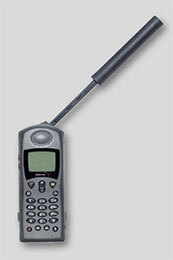Polar Encyclopædia
COMMUNICATIONS – SAFETY – EMERGENCY ASSISTANCE

COMMUNICATIONS VIA IRIDIUM
The geostationary satellites used for communication purposes (telephone, Internet, television) are placed in orbit over the equator and are not accessible from the poles. So in the polar regions, communication is via the low-speed (64 Kbit) Iridium satellite system. For meteorological transmissions we use an EADS.
DISTRESS BEACONS
For safety purposes, the balloon carries a Sarsat distress beacon. If it is activated, the beacon sends out a distress signal giving the position of the balloon. The signal is picked up by a monitoring satellite that relays the distress signal to the base camp. Telephone communication with the balloon is always possible too.
EMERGENCY ASSISTANCE
In the area around the Geographic North Pole, emergency assistance can be provided by MI-8 helicopters based at Russia’s Borneo station that is set up every year in April close to the Pole. In the area around the Magnetic North Pole, assistance can be provided by Twin Otter aircraft based at Resolute Bay (Canada), and in the event of an emergency in the Beaufort Sea Twin Otters can reach us from Inuvik on the Mackenzie River delta or from Prudhoe Bay in Alaska.
Support the project with a donation
The Polar POD expedition is one of the stamp of the pioners, a human adventure coupled with a technological challenge, an oceanographic exploration never before carried out which will mark a milestone in the discovery of the oceans.
Thank you for your support !